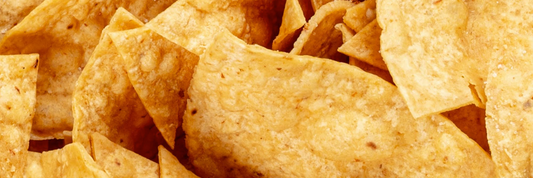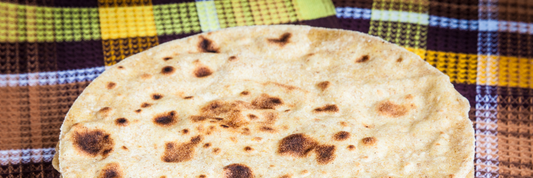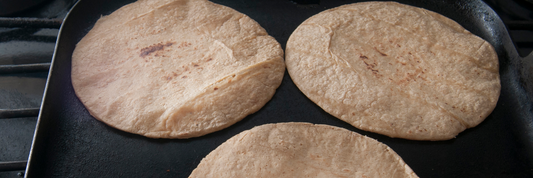Nothing beats the satisfying crunch of a fresh cracker, whether you're enjoying them with cheese, dips, or straight from the package. However, that perfect crispiness can quickly turn into a disappointing soggy mess if crackers aren't stored properly. Poor storage doesn't just ruin the texture – it can lead to mold growth, rancid oils, and unnecessary food waste.
Proper cracker storage matters more than most people realize. When crackers lose their crunch, they lose their appeal entirely. Nobody wants to bite into a limp, stale cracker that should have provided that perfect textural contrast to creamy spreads or soups.
That's where smart packaging solutions come into play. At kimecopak.ca, we understand the importance of keeping food fresh while making environmentally responsible choices. As a Canadian supplier of eco-friendly packaging for the food industry, we've seen firsthand how the right storage methods can extend shelf life dramatically while reducing waste.
What Are People Looking For?
When it comes to cracker storage, most people have similar concerns that stem from common kitchen frustrations:
How to keep crackers crispy is the number one question we hear. There's nothing more disappointing than opening a package of crackers only to find they've gone soft overnight.
Storing opened crackers presents a challenge since the original packaging often isn't designed for resealing. Once that inner wrapper is torn, the clock starts ticking on freshness.
Preventing sogginess becomes especially important in humid climates or during summer months when moisture seems to find its way into everything.
People frequently ask about the best containers or packaging for crackers. The market is full of storage options, but not all are created equal for maintaining that crucial crunch factor.
Shelf life after opening varies dramatically depending on storage method, making this a practical concern for anyone who doesn't finish a whole package in one sitting.
Questions about storing crackers in freezer or fridge come up surprisingly often, especially from people dealing with extreme climates or bulk purchases.
Eco-friendly airtight storage ideas reflect a growing awareness that food storage solutions should protect both our food and our environment.

What Affects Cracker Freshness & Shelf Life?
Understanding what makes crackers go bad helps us prevent it from happening in the first place.
Humidity and air exposure are the biggest enemies of crispy crackers. Moisture in the air gets absorbed by crackers, causing them to lose their crunch within hours in humid conditions. Meanwhile, oxygen exposure leads to oil oxidation, which creates off-flavors and can make crackers taste rancid over time.
I learned this lesson the hard way during a camping trip in the Pacific Northwest. Despite keeping crackers in what I thought was a secure container, the coastal humidity turned my entire supply into chewy disappointments within two days.
Ingredients play a crucial role in how long crackers last. Low-oil varieties like water crackers, Wasa crispbreads, and plain saltines tend to stay fresh longer because there's less fat to go rancid. On the other hand, crackers loaded with oils, nuts, or seeds spoil much faster. Cheese crackers and buttery varieties are particularly susceptible to staleness.
Temperature and light exposure also impact cracker quality. Heat can soften crackers and accelerate oil breakdown, while direct sunlight can cause similar degradation. Interestingly, freezing crackers can work, but only if done correctly – improper freezing introduces moisture problems when thawing.
How to Store Crackers (Opened & Unopened)
Before Opening
Unopened crackers are relatively easy to maintain. Keep them in their original packaging and store in a cool, dry place with temperatures between 20-25°C (68-77°F). Avoid storing them near heat sources like ovens or in direct sunlight from windows.
The pantry or a cool cupboard works perfectly for most climates. I keep unopened crackers on a shelf away from the dishwasher and coffee maker, which both generate heat and humidity.

After Opening
Once opened, crackers need more protection from air and moisture:
Zipper bags and reusable eco-pouches offer the simplest solution for short-term storage. Press out excess air before sealing, and these work well for crackers you'll finish within a week. The key is creating as airtight a seal as possible.
Glass jars and Mason jars provide excellent airtight storage and work particularly well in humid climates. The clear glass lets you see what you have, and the tight seal keeps moisture out effectively. I prefer wide-mouth jars that make it easy to remove crackers without breaking them.
Airtight containers with locking lids offer the best long-term protection. Look for containers with rubber gaskets that create a proper seal. These reusable plastic or glass containers can keep crackers fresh for weeks when used properly.

Tips to Keep Crackers Crispy vs Prevent Moisture
Beyond basic airtight storage, several techniques can help maintain maximum crispiness:
Silica gel packets or commercial moisture absorbers work wonders inside storage containers. Save the little packets that come with shoes or electronics, or buy food-safe versions specifically for this purpose. One or two packets in a container can absorb excess moisture that would otherwise soften crackers.
A slice of bread or small baking soda packet can absorb moisture naturally. Replace the bread every few days, as it will eventually mold, but it effectively draws humidity away from crackers in the meantime.
Vacuum sealing or mylar bags with oxygen absorbers provide professional-level protection for long-term storage. This method can keep crackers fresh for months and works especially well for bulk purchases or emergency food storage.
How to Store Crackers in Freezer
Yes, you can freeze crackers successfully, but technique matters. Use airtight freezer-safe bags or rigid containers to prevent freezer burn. Vacuum-sealing works best because it eliminates air that can cause ice crystals to form.
The critical step is thawing: let frozen crackers come to room temperature while still sealed. This prevents condensation from forming on the crackers themselves. I've successfully frozen crackers for up to three months using this method.
How to Store Crackers in the Fridge
Refrigerator storage isn't ideal for crackers long-term because fridges are naturally humid environments. However, short-term fridge storage can work if you live in an extremely hot, humid climate and have no other cool storage options.
If you must use the fridge, place crackers in a completely sealed container with silica gel packets. Even then, use them quickly because the humidity will eventually win the battle against crispiness.
How to Restore Stale Crackers
When crackers have lost their crunch but aren't moldy or rancid, you can often restore them:
A toaster oven provides the most controlled method for re-crisping crackers. Spread them in a single layer and heat for 1-2 minutes at around 160°C (325°F). Watch carefully to prevent burning.
A conventional oven works for larger batches. Use the same temperature but check frequently since different types of crackers crisp at different rates. Thin crackers might only need 30 seconds, while thicker varieties could take several minutes.
Let restored crackers cool completely before storing them again, as trapped heat can create moisture problems.

Shelf Life: How Long Do Crackers Last?
Commercial unopened crackers typically maintain quality for 6-9 months when stored properly. The "best by" date provides a good guideline, but crackers often remain safe and tasty well beyond this date if stored correctly.
Opened crackers generally stay good for 2-4 weeks in proper airtight conditions. This varies significantly based on humidity, temperature, and the specific type of cracker.
Homemade crackers have a much shorter lifespan of 7-10 days unless vacuum-sealed or frozen. The lack of preservatives means they're more susceptible to staleness and spoilage.
Low-oil varieties like Wasa crispbreads consistently outlast their oilier counterparts. I've had plain water crackers stay crispy for over a month in a glass jar with silica packets.
Storing Crackers in Humid Climates
Humid climates present special challenges that require extra measures:
Airtight glass jars with moisture absorbers become essential rather than optional. The combination of impermeable glass and active moisture control can maintain crispiness even in tropical conditions.
Store in the coolest, darkest cupboards available. Even small temperature differences can significantly impact how much moisture crackers absorb from the air.
Baking soda sachets placed nearby can help control ambient humidity in storage areas. Small cloth bags filled with baking soda work as natural dehumidifiers for enclosed spaces.
Avoid cardboard boxes or loose bags entirely in humid conditions. These materials actually absorb moisture from the air and transfer it directly to the crackers.
Eco-Friendly Airtight Packaging Solutions
Sustainable storage doesn't mean compromising on effectiveness. Modern eco-friendly options can match or exceed traditional packaging performance:
At kimecopak.ca, we offer a comprehensive range of environmentally responsible storage solutions including mylar bags, glass jars, PET containers, and zipper eco-pouches. These products are designed to be completely airtight while remaining reusable and sustainable.
Mylar bags with heat-sealed edges provide excellent oxygen and moisture barriers while being recyclable. Glass jars offer indefinite reusability and perfect protection from environmental factors. PET containers deliver durability without environmental guilt, and zipper eco-pouches combine convenience with sustainability.
This approach matters because proper food storage reduces waste while aligning with zero-waste lifestyle goals. When crackers stay fresh longer, fewer packages end up in landfills, and fewer resources are wasted on food production.

Quick Reference – Cracker Storage Cheat Sheet
|
Scenario |
Best Practice |
|---|---|
|
Opened recently |
Zipper bag or airtight container |
|
Long-term storage |
Vacuum seal or mylar with absorber |
|
Living in humid climate |
Glass jar + silica gel |
|
Crackers turned soft |
Toaster oven 90s at 160°C |
|
Freezing crackers |
Airtight freezer-safe vacuum pack |
|
Fridge storage (short-term) |
Only in dry sealed container |
|
Sustainable storage |
Eco-friendly resealable packaging |
Conclusion
Proper cracker storage isn't complicated, but it makes a dramatic difference in food quality and waste reduction. By understanding how humidity, air exposure, and temperature affect cracker freshness, you can choose storage methods that keep them crispy for weeks instead of days.
The right approach extends shelf life significantly, prevents disappointing snack experiences, and reduces food waste. Whether you're dealing with everyday pantry storage or planning for long-term food security, these methods work reliably across different climates and situations.
Consider upgrading your food storage with eco-friendly packaging solutions that protect both your food and the environment. At kimecopak.ca, we provide airtight packaging options that are ideal for home use or small food businesses looking to maintain quality while meeting sustainability goals.
Explore our range of environmentally responsible storage solutions and discover how proper packaging can transform your approach to food preservation.
Frequently Asked Questions
Can you freeze crackers?
Yes, you can freeze crackers in airtight packaging. The key is to let them thaw while still sealed to avoid condensation forming on the crackers themselves.
How to store crackers in the fridge?
Refrigerator storage should only be short-term and always in airtight, moisture-protected containers with silica gel packets if possible.
How long do crackers last after opening?
Properly stored opened crackers typically stay fresh for 2-4 weeks, depending on humidity, temperature, and cracker type.
What's the best container for crackers?
Glass jars provide excellent protection, while zip-lock pouches, mylar bags, or vacuum-sealed containers also work well depending on your specific needs.
How to prevent soggy crackers?
Store in airtight containers with silica gel packets or moisture absorbers, and keep them in cool, dry locations away from humidity sources.







